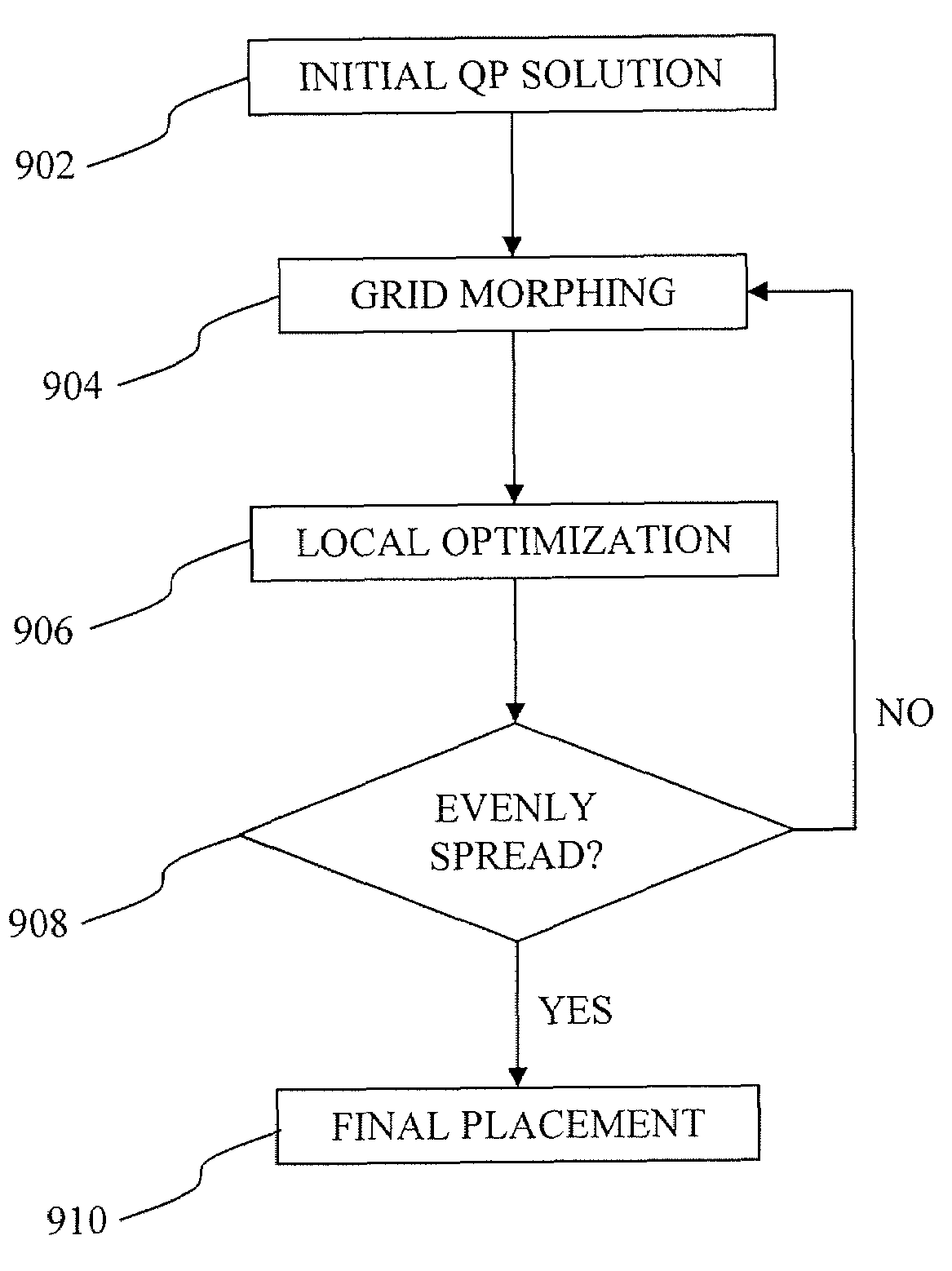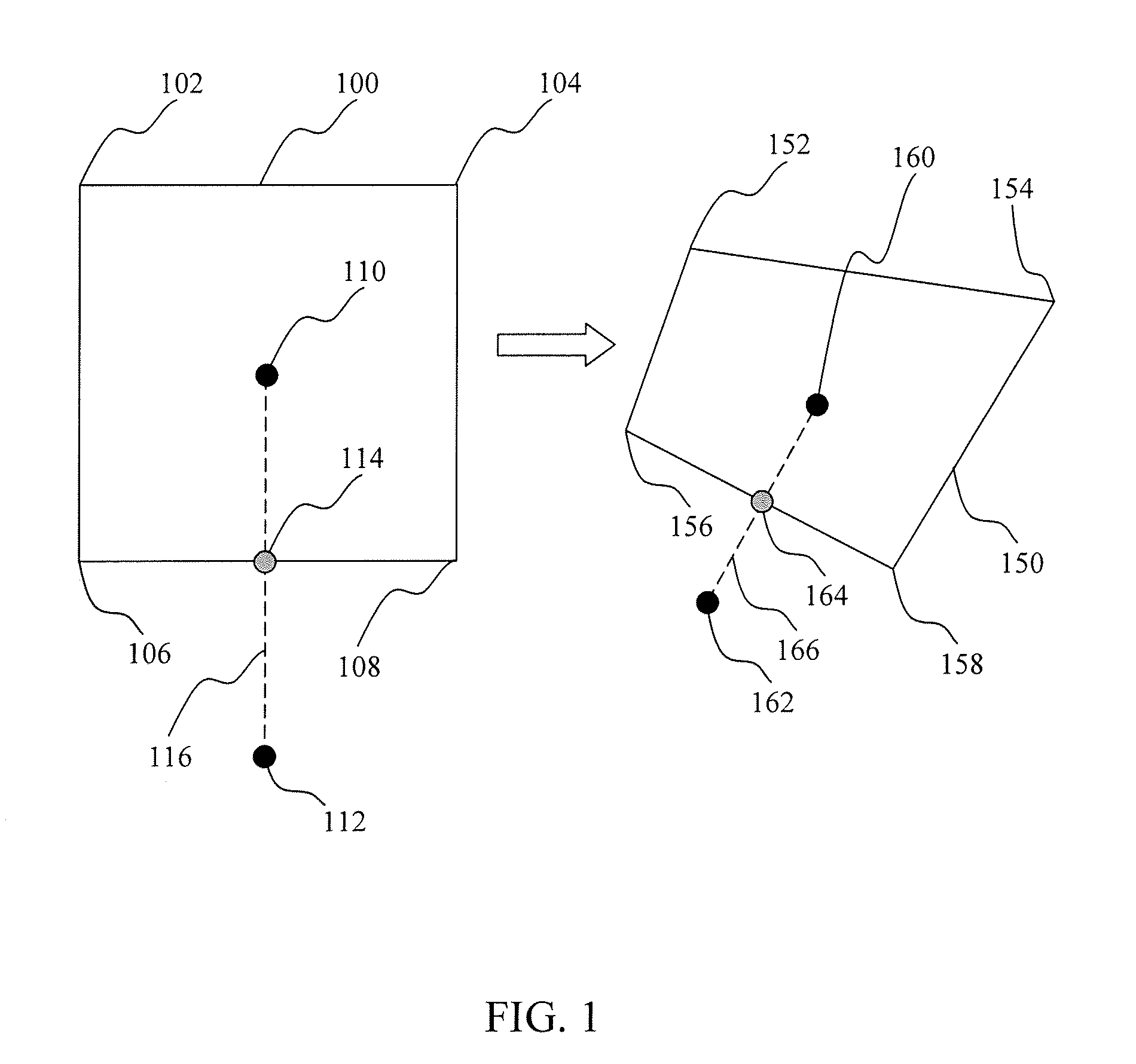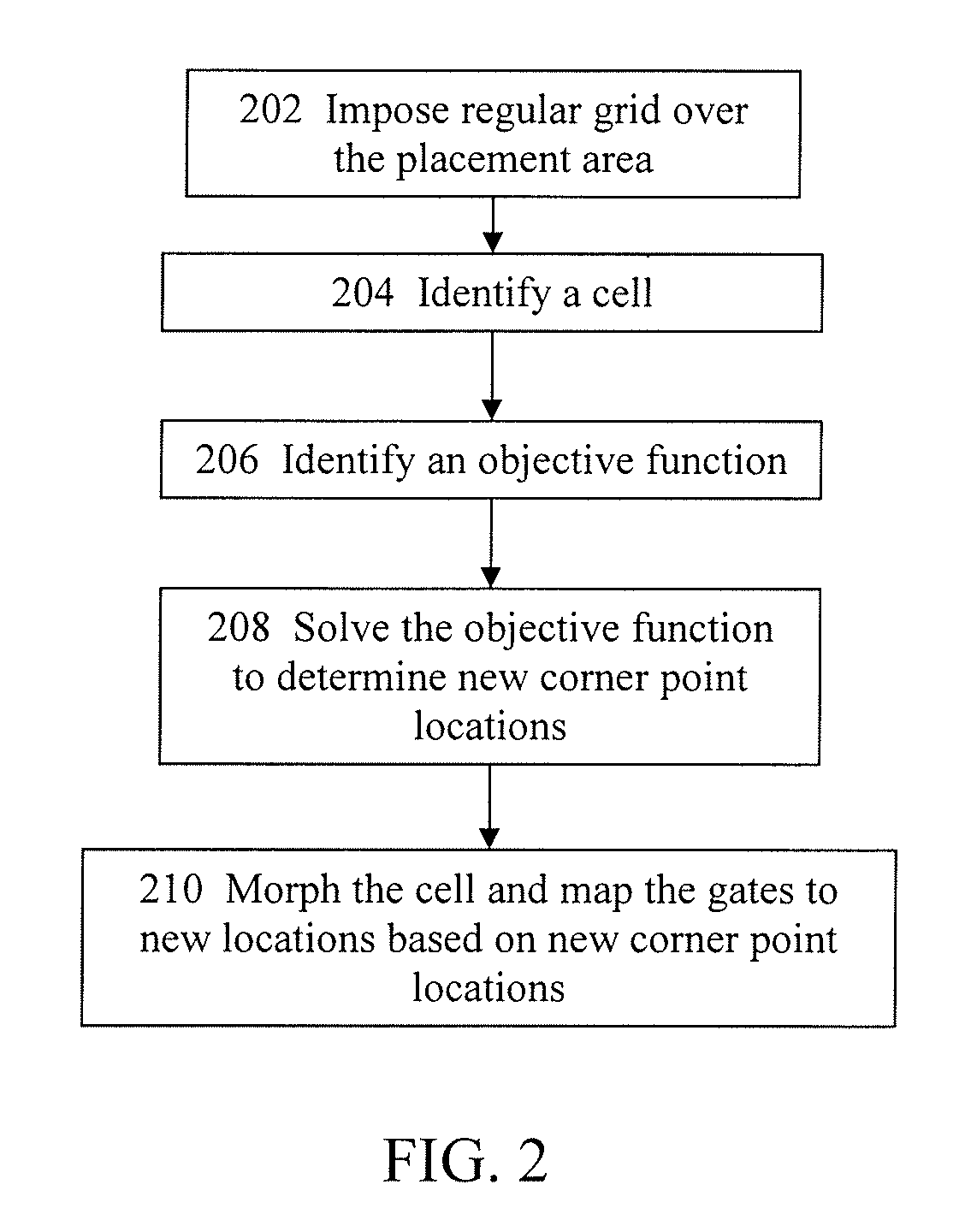Methods, systems, and computer program products for grid-morphing techniques in placement, floorplanning, and legalization
a technology of floorplanning and grid morphing, applied in the field of methods, can solve the problems of undesired waste of computation resources, increased the demand for better optimization of placement algorithms, and the exponential growth of complexity of integrated circuit designs, so as to achieve the effect of minimizing the perturbation of placement, avoiding the need for re-planning, and maintaining the stability of placemen
- Summary
- Abstract
- Description
- Claims
- Application Information
AI Technical Summary
Benefits of technology
Problems solved by technology
Method used
Image
Examples
Embodiment Construction
[0021]The present invention is directed to an improved methods, system, and computer program product for the placement of objects in a predefined area by grid morphing. As noted above, conventional methods and systems oftentimes ignore placement stability and thus cause unnecessary and undesired waste of runtime and computation resources.
[0022]According to some embodiments, the placement tool imposes a regular grid over the placement area, identifies a cell and an objective function, minimizes the objective function to determine the new locations of the cell after the grid morphing process, and then morph the cell and map the gates or other design features within the cell according to the new locations of the cell.
[0023]Yet some other embodiments use a pressure-based solver to determine the new locations of the cell after grid morphing. Yet some other embodiments further define sensitivity of a characteristic of the design with respect to the geometric changes of the cell and modify...
PUM
 Login to View More
Login to View More Abstract
Description
Claims
Application Information
 Login to View More
Login to View More - R&D
- Intellectual Property
- Life Sciences
- Materials
- Tech Scout
- Unparalleled Data Quality
- Higher Quality Content
- 60% Fewer Hallucinations
Browse by: Latest US Patents, China's latest patents, Technical Efficacy Thesaurus, Application Domain, Technology Topic, Popular Technical Reports.
© 2025 PatSnap. All rights reserved.Legal|Privacy policy|Modern Slavery Act Transparency Statement|Sitemap|About US| Contact US: help@patsnap.com



